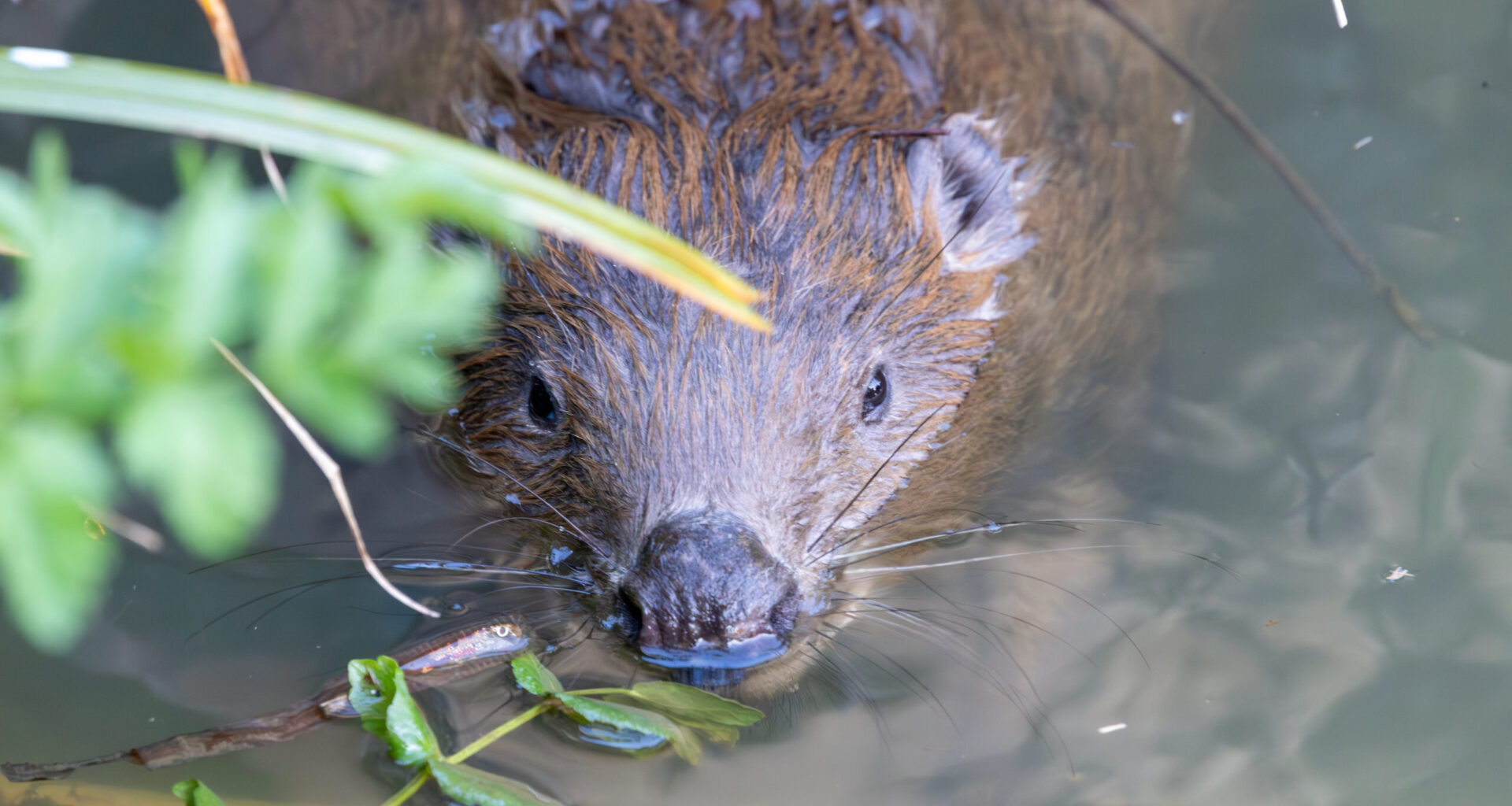A wild beaver released in Studland in Dorset, made an extraordinary journey – presumably by sea – to the nearby town of Swanage, choosing to settle in a small stream next to the council’s toilet block.
Two pairs of beavers were released into the wild in March 2025 on National Trust’s land at Studland in Dorset – the first released in England for centuries into the wild rather than an enclosure – witnessed by government minister for nature Mary Creagh, MP for South Dorset Lloyd Hatton, plus media organisations.
Advertisement
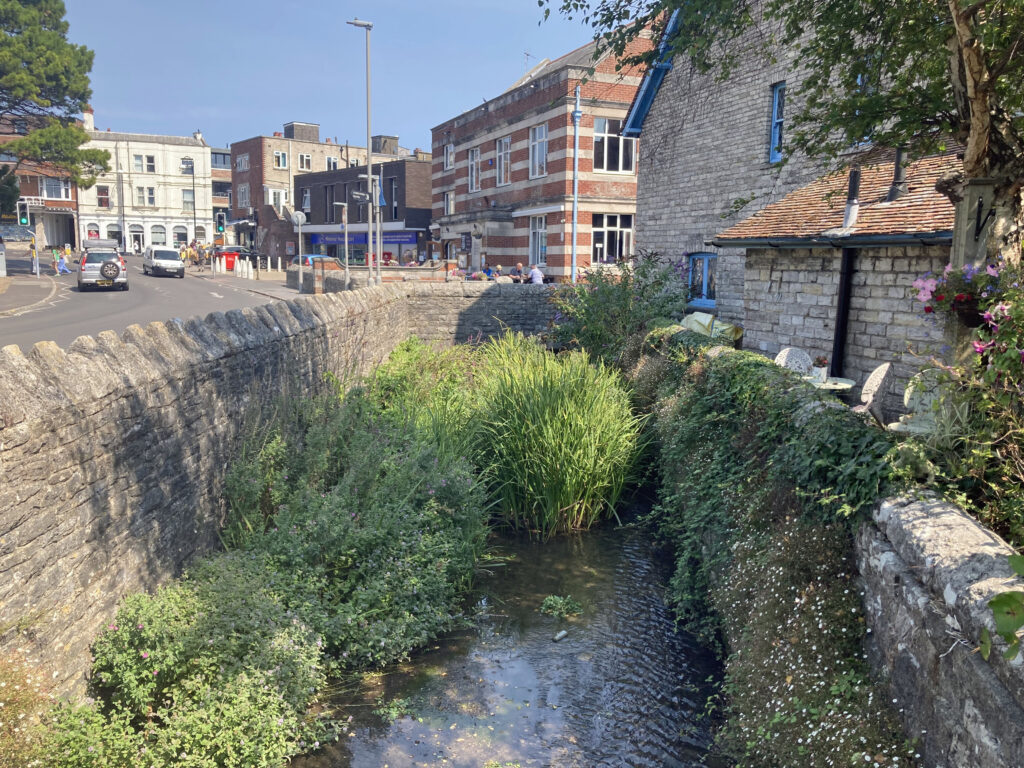
The Swan Brook by the Conservative Club where the beaver was first spotted
First spotted by the Con Club
In May 2025 reports came into the National Trust that a beaver had been spotted in a stream in Swanage outside the town centre’s Conservative Club.
Initially there was understandable scepticism that the passer-by had correctly identified a beaver as he came out of the Con Club that evening.
However he persisted and another sighting was reported further up Swanage Brook by the toilets in the car park at King George’s playing fields.
At this point the team at the National Trust realised they needed to check this out and to their complete surprise discovered evidence that a beaver was indeed making a home known as a lodge in the stream next door to the toilet block.
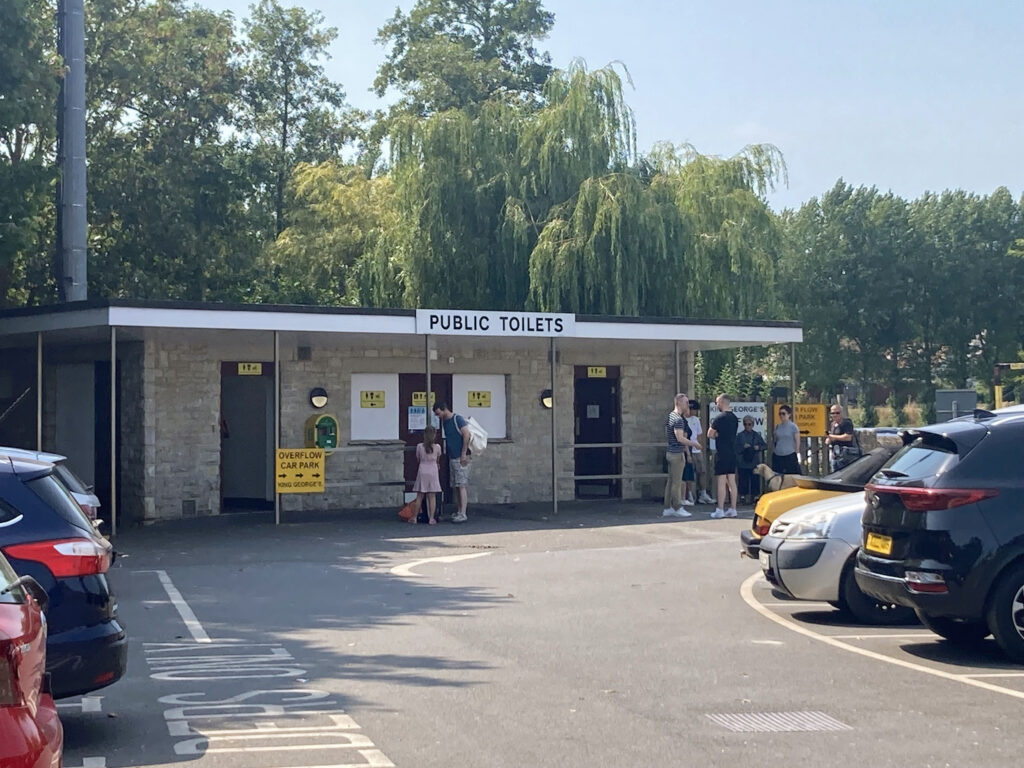
The toilet block at King George’s playing fields – not the normal sort of bog to spot a beaver!
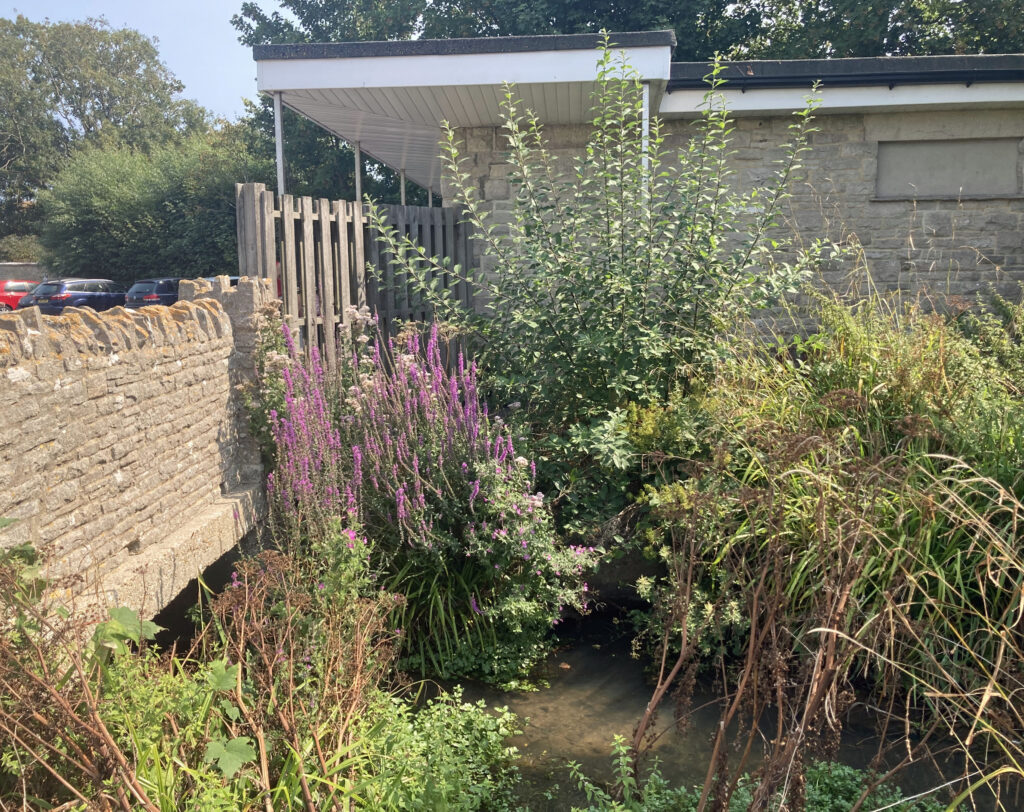
The Swan Brook next to the toilet block where the female beaver set up her new home, away from her mate
“No deep water for the beaver to hide in”
The National Trust has now confirmed that it applied for a licence to trap the beaver in consultation with the Beaver Trust and has rehomed it back at Little Sea in Studland.
Purbeck beaver project officer at the National Trust Gen Crisford said:
“The decision was made to trap the beaver and bring it back to Little Sea. Usually, we wouldn’t intervene when a beaver relocates itself, but in this case, we moved it for welfare reasons – it was spotted in a popular dog-walking area, and there was no deep water for the beaver to hide in, making it very vulnerable.”
All of the released beavers have identification chips, so Gen was able to confirm that the beaver who had unexpectedly turned up in Swanage was indeed the first female beaver released in March 2025.
It was a quite remarkable discovery as there are no river networks linking the two areas and the team can only assume the beaver swam round Old Harry along the coast to get to the town.
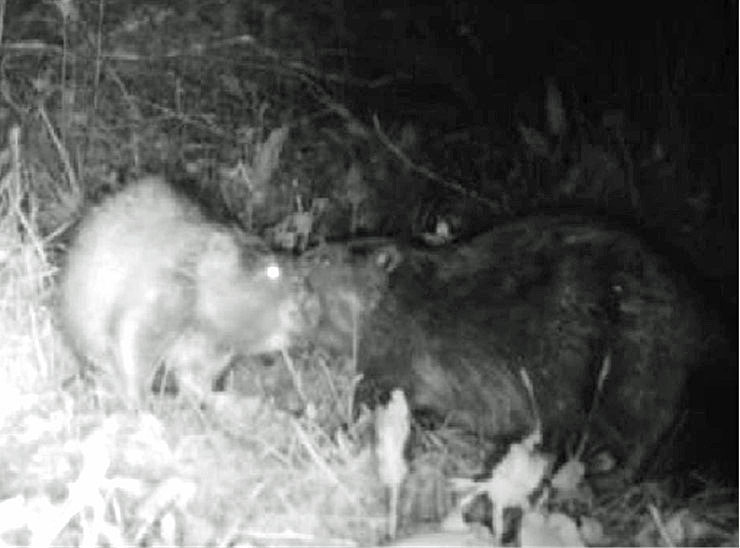 National Trust trail cam
National Trust trail cam
Beavers reunited back at Little Sea, captured on a wildlife cam
No hard feelings
The good news was when the female beaver was reintroduced to its male they appeared to bond by rubbing noses, so it seems there were no hard feelings between the pair.
Indeed it’s understood that they are making a new lodge together, which has raised hopes that they may breed in 2026.
Gen added:
“Now back living at Little Sea, these beavers have been seen occasionally crossing Ferry Road, close to the entrance to Knoll Beach car park. So, we’re asking drivers to be aware, especially when driving at dusk or night-time.”
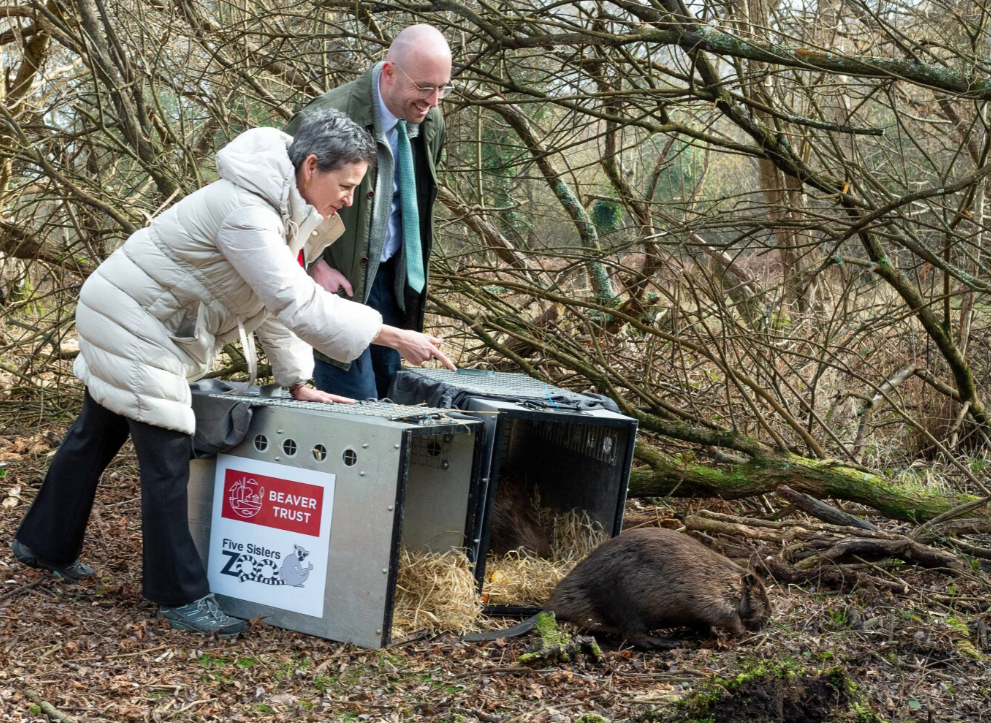 Beaver Trust
Beaver Trust
Government minister for nature Mary Creagh (left) and MP for South Dorset Lloyd Hatton (right) had the honour in March 2025 of releasing the first pair of beavers into the wild
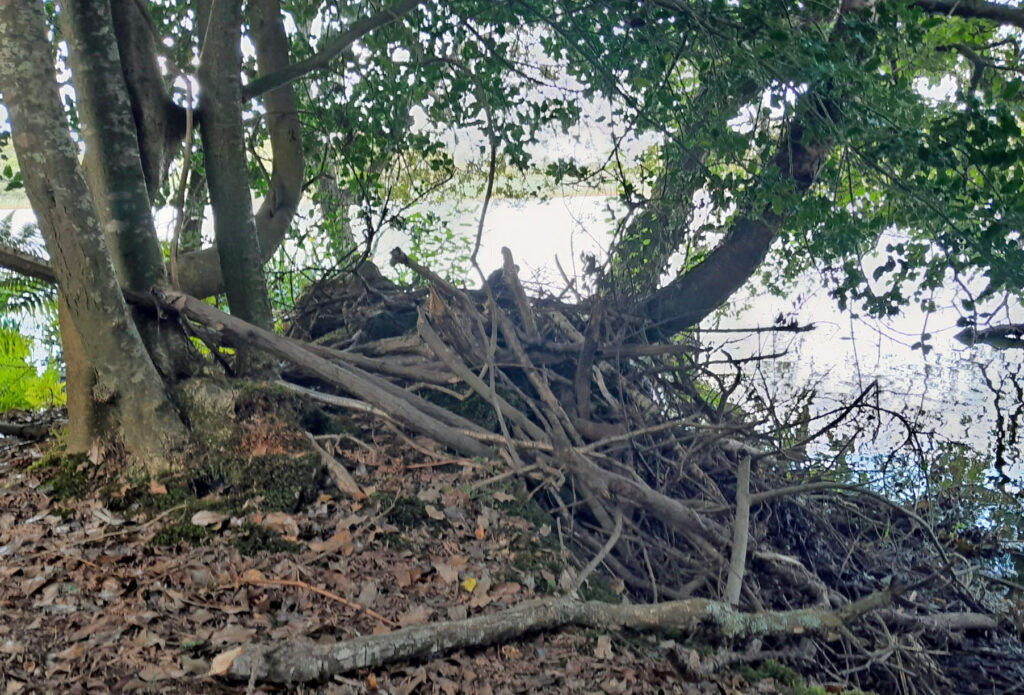 Gen Crisford
Gen Crisford
Hopes are high the female beaver will now shun the bright lights of Swanage and settle down in Studland where they are building a new home
Sad news
The National Trust beaver update isn’t all positive.
With the long dry spring and early summer, water levels fell around Little Sea, and the second pair of beavers released in March 2025 chose to move elsewhere.
The National Trust says that while extensive research has gone into the suitability of Little Sea as a habitat for beavers, it’s impossible to exactly predict how wild animals will behave in any reintroduction project.
While the team was trying to find where they had gone, it had the sad news at the end of July 2025 that the body of a beaver had been found washed up on North Beach in Swanage Bay by a member of National Trust staff.
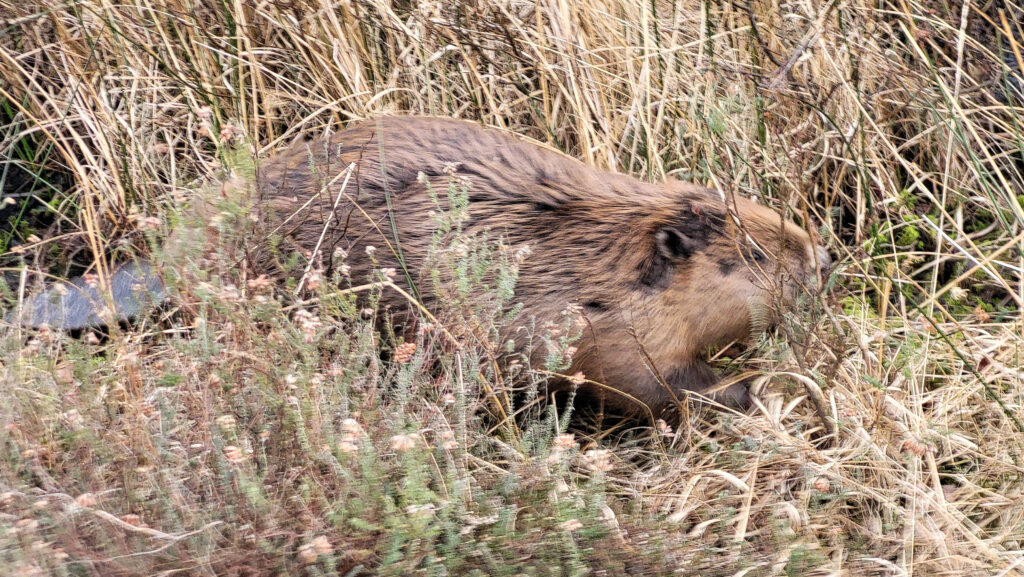
One of the second pair of beavers who were officially released
Gen said:
“Until a post-mortem examination is carried out, we can’t confirm the cause of death, but initial signs indicated salt-water poisoning.
“Beavers don’t usually live in salt water, but they can spend short periods of time in the sea to explore nearby areas or for migration purposes. Longer periods of salt-water ingestion can be fatal. For this reason, if anyone ever spots a beaver in the sea, we’d ask them to let us know.
“Whilst this is really upsetting, it does highlight that beavers are wild animals and there are always risks with reintroduction projects.”
The female beaver of the pair, still hasn’t been spotted but there are signs of beaver activity in the area where she is believed to be living.
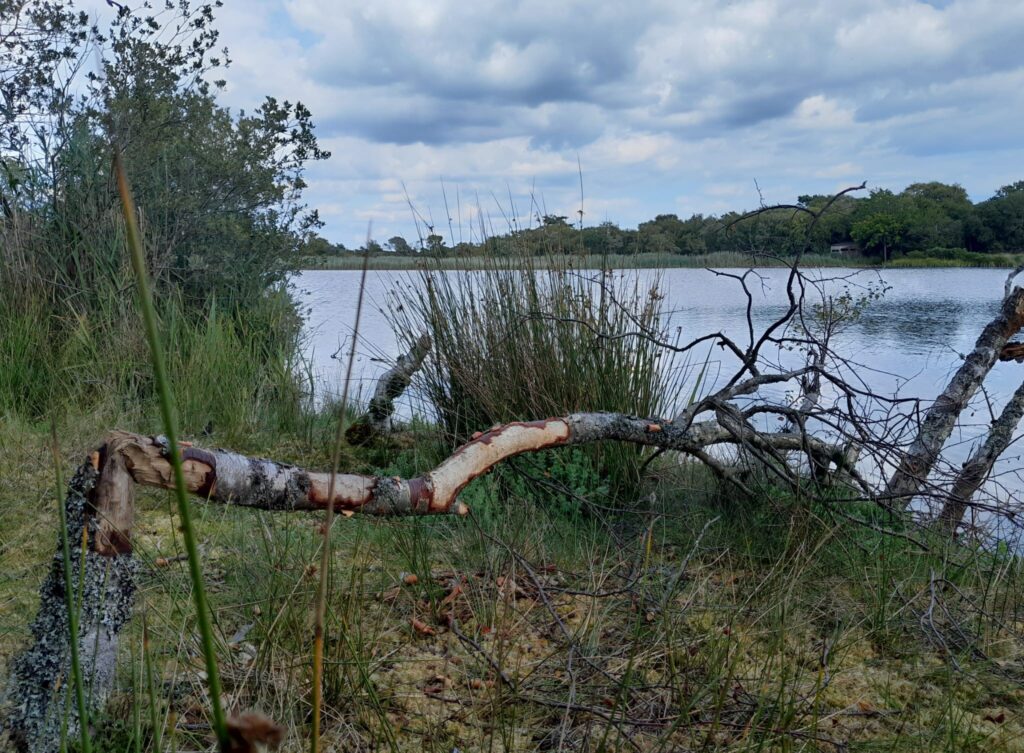 Gen Crisford
Gen Crisford
Evidence that beavers are active at Little Sea
First release of beavers
Of course, there is another pair of beavers who were illegally released at Little Sea in early 2024, before the National Trust had gained a licence for a wild release.
Since then, they have been thriving. They built an extensive lodge and reared one baby beaver – a kit – in 2024. This family has since successfully produced two more kits in summer 2025.
Young beavers stay with their parents for up to two years before exploring to find a new territory, so the family of five is expected to stay in the area for a while.
Sightings of the beavers are currently possible from all three bird hides at Little Sea, called Triangular, Rees Cox and Grebe, with the best place probably being the Triangular Hide off Ferry Road.
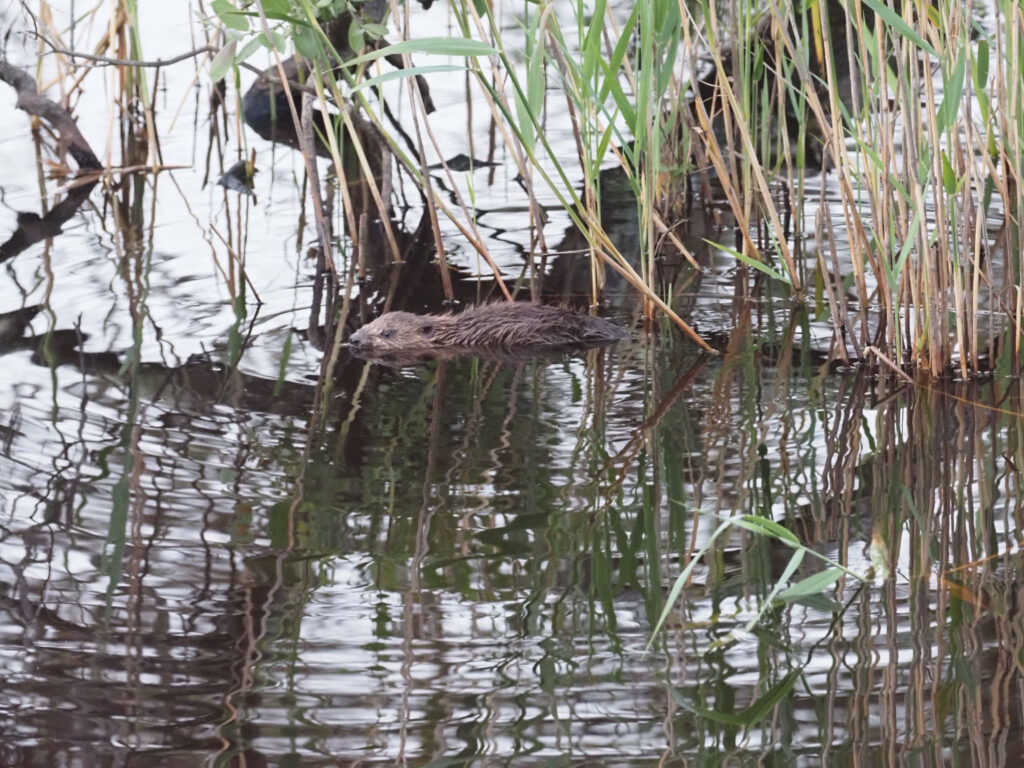 Pam Ballam
Pam Ballam
One of the new kits at Little Sea
Community involvement
The National Trust has set up a steering group for the project which involves about 20 people, including farmers and neighbouring landowners, local communities and statutory bodies, as well as beaver experts from several organisations.
There’s also a growing group of volunteers who have learnt to identify which beaver is which, tracking their movements and managing the network of cameras every night to see what the beavers are up to.
Gen said:
“The loss of one of the beavers doesn’t affect the long-term aims of the project to introduce more animals and establish a healthy, viable population of beavers in Purbeck. However, it may affect exactly where and when we introduce new animals.
“We want to ensure that the current pairs are well-settled with established territories before adding more beavers to Little Sea. We will then consider which ages and sexes may be most beneficial to the future population.
“We will continue working with other partners and beaver experts as we decide on next steps.
“We will also continue to keep local residents informed and involved with the reintroduction of beavers to Little Sea. It may not always be easy with sad news, as well as success stories, but we will let everyone know how the project progresses.”
“A huge thank you to our wonderful volunteers, who tirelessly wade through hours and hours of footage – and actual swamps! – to help us to keep up to date with the beavers’ latest activities. We couldn’t do this without them.”
Watch beaver videos
Further information

